Lukretia sends for you
Femme Fatale?
Peter Croy
Lukretia sends for you
1975
color etching; 76 x 56 cm
In a bed, under a canopy, sits a naked beauty. She lifts the bedspread invitingly, as if encouraging us to become her bedmate. Under the bed, the men she has already "used up" can be seen, but only as skeletons. Their heads, however, seem incorruptible. They seem almost like a collection of trophies in which every single dead lover remains identifiable. At the same time, the heads give essential features to the biography of the woman who had the reputation of having led a dissolute, even incestuous and death-determined love life. The dagger on her right gives us a hint that death seems to be present in bed.
We are talking about Lucretia Borgia (* 1480, Rome; † 1519 near Ferrara), daughter of Rodrigo Borgia, later Pope Alexander VI (* 1431; † 1503), and sister of Cesare Borgia (* 1475, † 1507), who rose to become a cardinal at the age of 18. Lucretia entered into several marriages with important men, which were either dissolved or ended with the death of the spouses. Almost without exception, Lucretia's father and brother were considered the main perpetrators of these events.
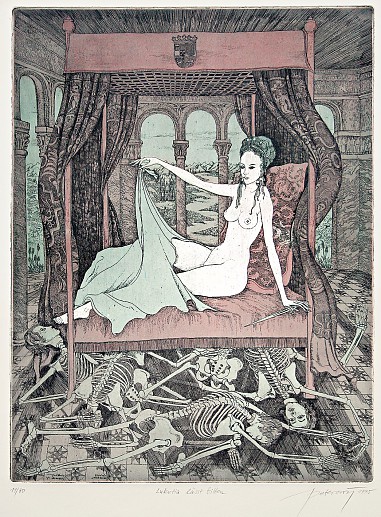
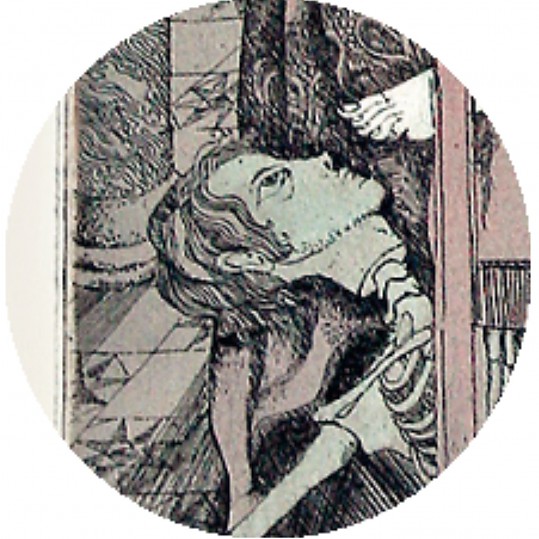
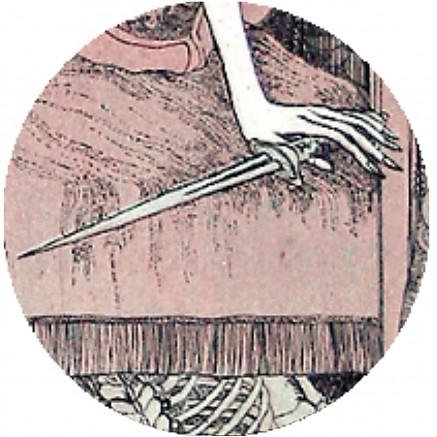
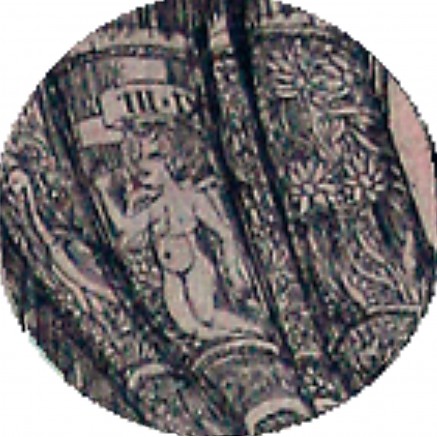
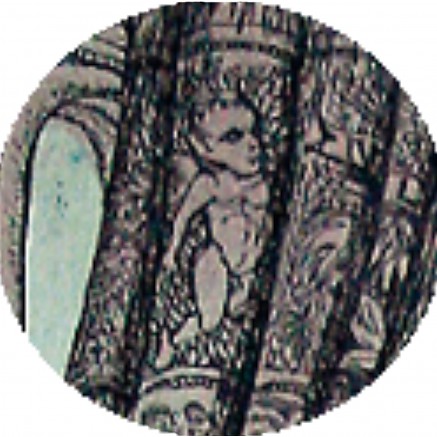
Because of their obsession with power, they are said not to have shied away from eliminating unpopular people. Lucretia Borgia herself was not always entirely uninvolved. This also earned her the reputation of being Europe's most famous poisoner. In the meantime, however, Lucretia Borgia seems to be on the road to rehabilitation, because some "Borgia researchers" argue that Lucretia was not the femme fatale that historical tradition and many artistic representations make her out to be. Allegedly, the mere fact that she belonged to the notorious Borgia family was enough to discredit Lucretia and expose her to the aforementioned accusations. Researchers see the fact that after the death of her father and her marriage to the Duke of Ferrara, her life no longer attracted any attention as an indication that she was not quite so wicked - on the contrary: from then on, she was even regarded as a charitable and pious person who was highly popular with the people and who was also very fond of art. The graphic "Lucretia lässt bitten" (1975) by the Austrian artist Peter Croy (* 1937), is rather unimpressed by this. Croy depicts Lucretia as a nymphomaniac, emotionally cold woman who lures men only to get rid of them again soon, and for good. That Lucretia leads a double life between love and death, revealing at the same time the ambivalence of her character, Croy works out by using small details. For example, the divided curtains of the canopy bed are adorned by a good/evil motif, in that the right curtain reveals an angel, the left a devil.
Regardless of the Lucretia myth, Croy's depiction can also be assigned to the dance of death genre, specifically to the topos of "death and Eros". Such depictions, especially of the 20th century, occasionally turn the death theme into the opposite, in that Eros - usually depicted as a naked female representing life as well as sin – conquers death.
The print has been part of the collection of the Museum for Sepulchral Culture since 1985.
Arbeitsgemeinschaft Friedhof und Denkmal e.V.
Zentralinstitut für Sepulkralkultur
Museum für Sepulkralkultur
Weinbergstraße 25–27
D-34117 Kassel | Germany
Tel. +49 (0)561 918 93-0
info@sepulkralmuseum.de








